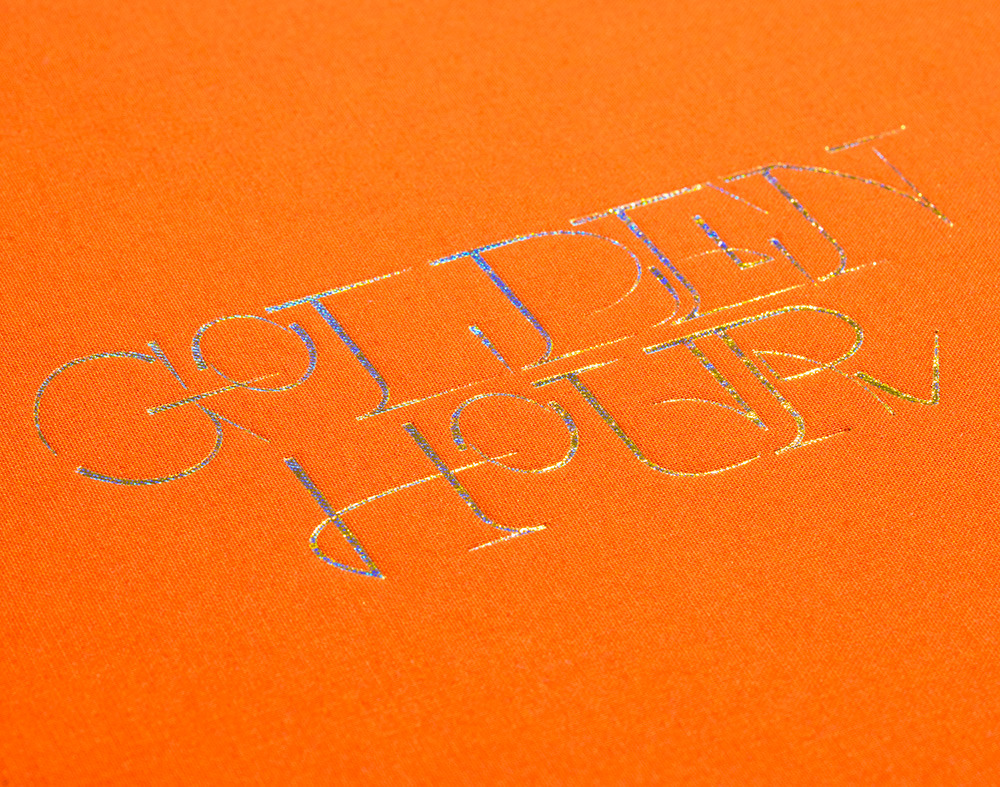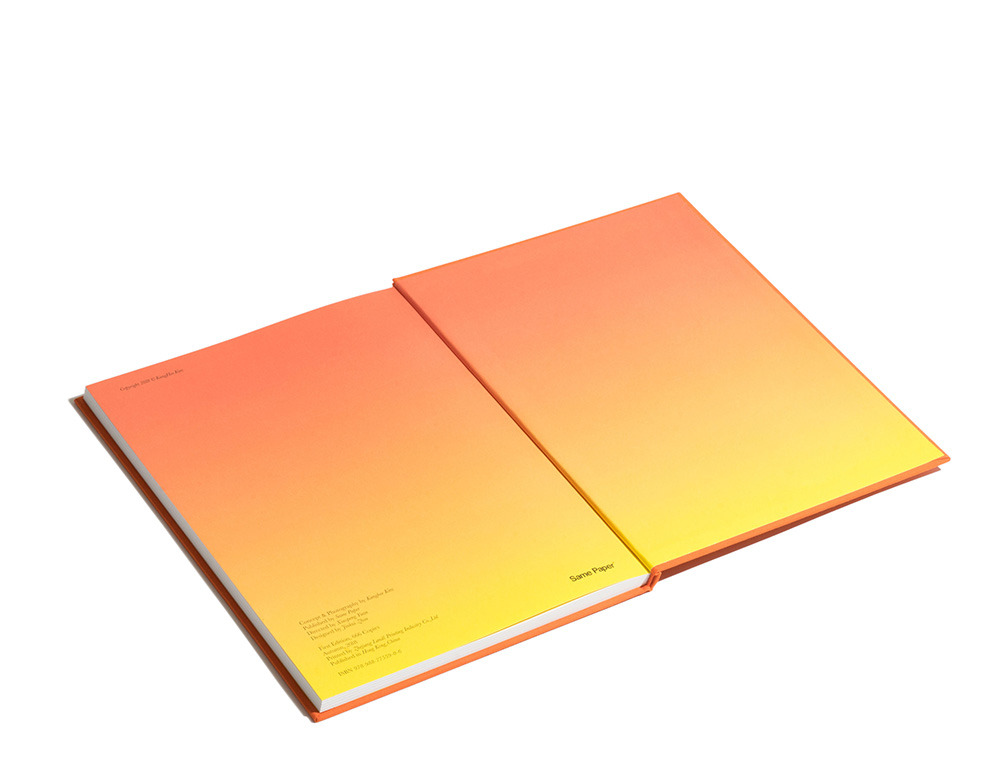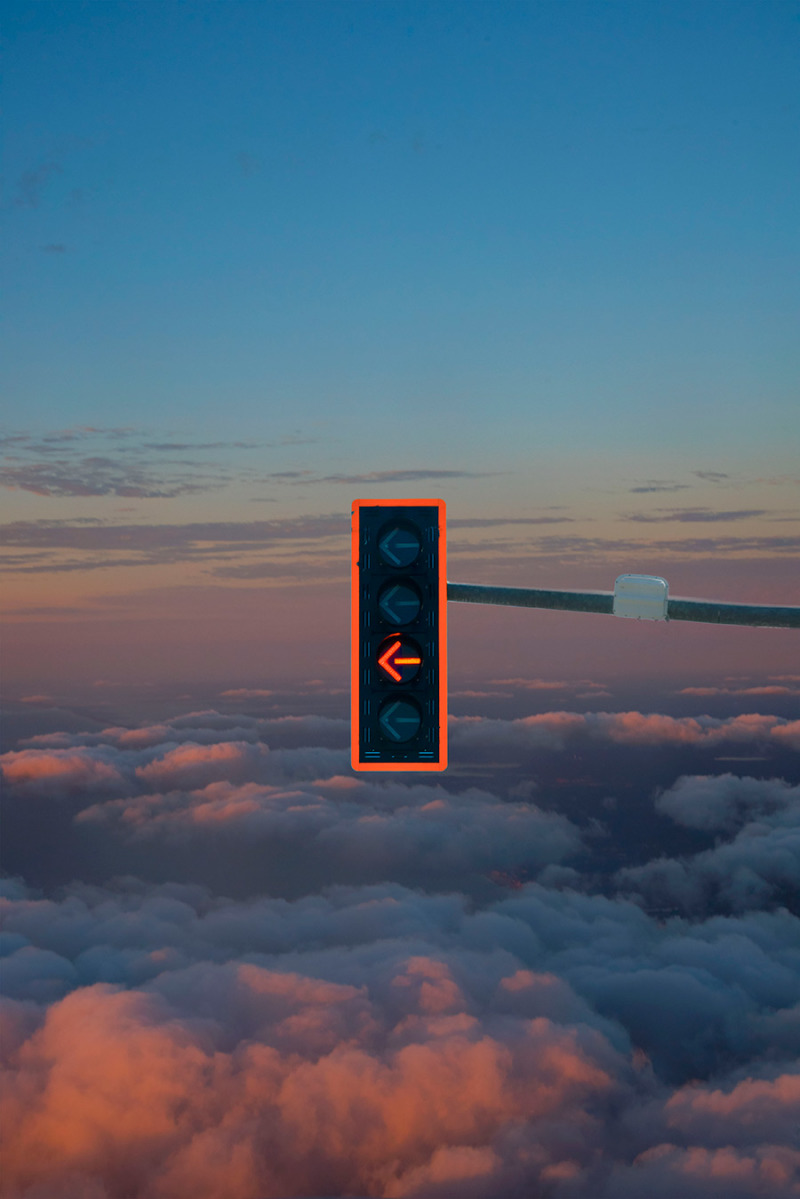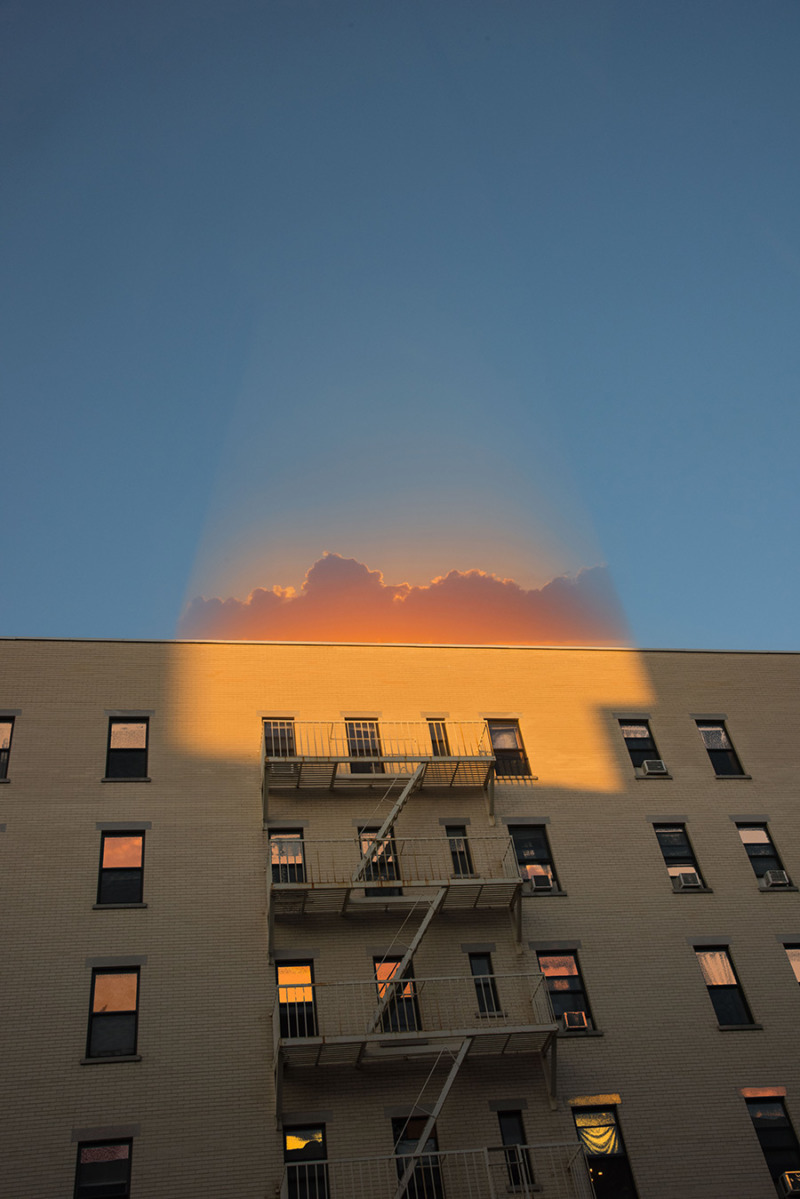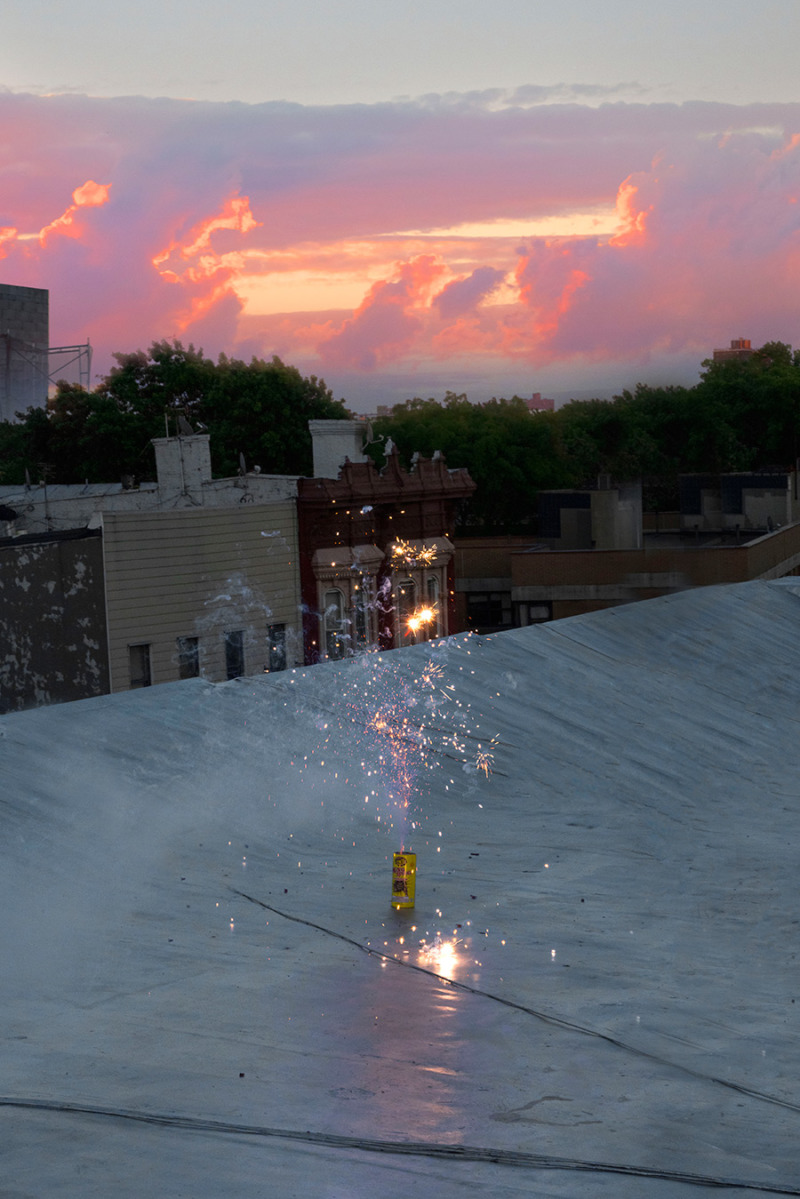Interview: KangHee Kim – Golden Hour
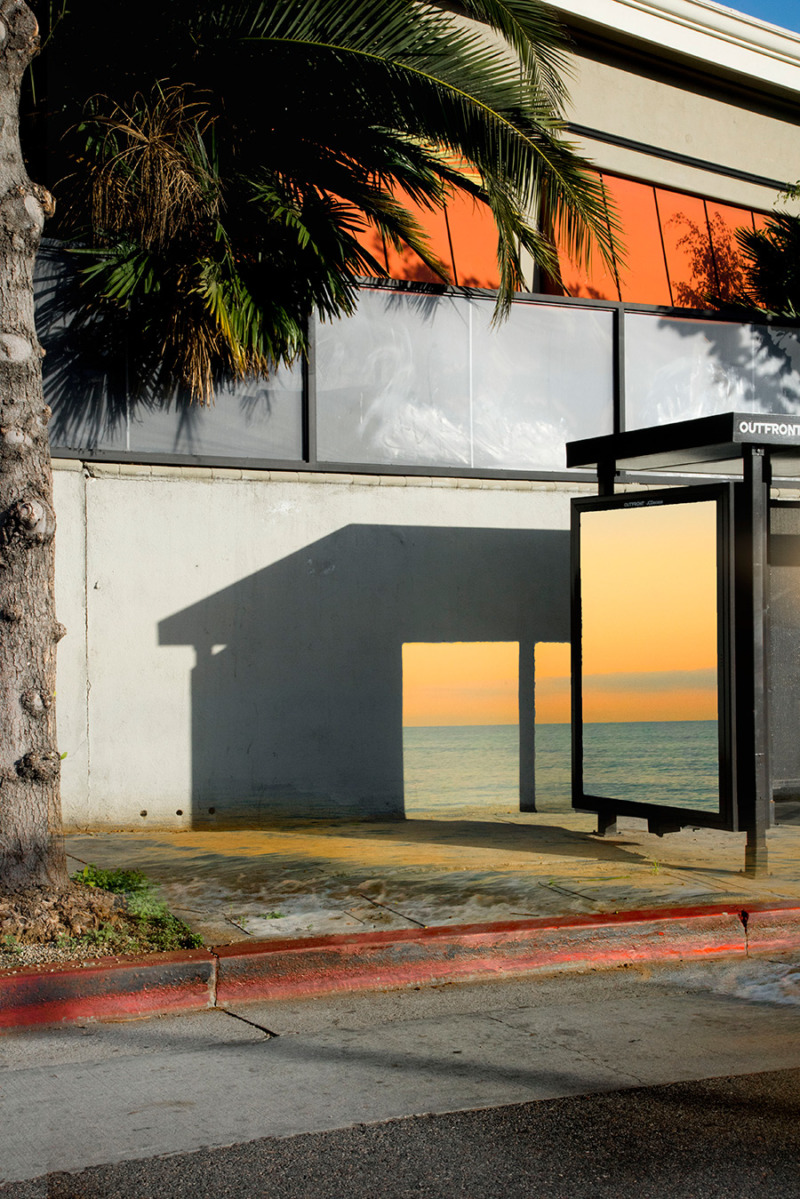
There is a time of day, where the earth is asking us, or even demanding us, to see. The time of day where we all take a moment away from the rollercoaster of everyday life. Stop the car. Turn around one second before you turn the key to your home. Look out the window, if you’re still at the office. The sun pushes her last warmth as a blanket on the landscape until the dusk sets in. Just a little bit of magic. It’s Golden Hour.
Korean photographer KangHee Kim translates this atmosphere through the images in her second book, Golden Hour (Same Paper, 2018). A book with a fresh look, with an orange, welcoming cover and attractive golden typography. But don’t let this book fool you; Kim plays with structures, layers and scenes that look both attractive and wondrous. In the midst of it all rises a desire to go on holiday; to travel and see the world. However, a certain blockage keeps us from reaching this satisfaction and leaves a subtle feeling of nostalgia and homesickness.
As a former fine art student, some of the aesthetics remind me of a certain playfulness, existing beyond photography. Illogical, sometimes bold choices are what make these images of unexpected scenery part of Kim’s reality. Frames sometimes filled with light, others that are isolated, closed, or share a slight peek-through. All so perfectly visualized, that it makes one wonder; is this real? Having lived in New York for the past 6 years, could it be Kim’s homely dreams of Seoul that have influenced her work?
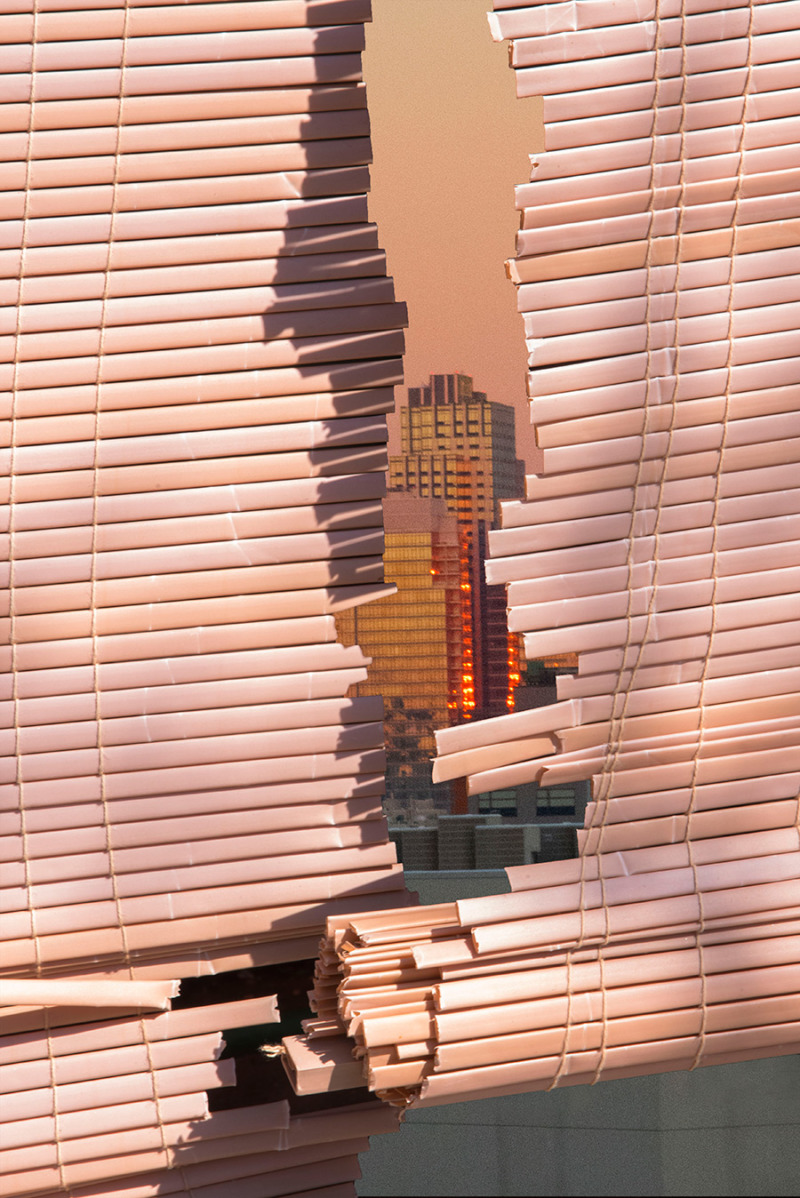
Congratulations on your new book Golden Hour. How does it feel to finish this project?
Thank you, it feels good to be done! I am grateful to have been able to make improvements from my first book, Magic. I can’t wait to make the next book to make it even better.
Magic was published in 2016; after two years, what do you see as the biggest changes in your work?
I think my work has become more concerned in creating seamless illusions rather than revealing the process; I have started to be really subtle when leaving marks of my edits. Initially, I was inspired to leave flaws but I ultimately found them distracting from my overall intention. I am interested in constructing new sights or spaces from my own experiences. I’ve been able to travel more frequently within the united states, which has bought more changes to my work.
You’ve worked with the same publisher on both of your titles; can you describe your relationship with Same Paper?
Same Paper has been very supportive of my work since the beginning; I really appreciate them. It’s really rare to find self-publishing as active as Same Paper in East Asia. They were fairly new when they first reached out to me to make Magic. Since I can’t go see proofs myself in China, I can trust
Did Golden Hour reflect these changes?
Yes. The images are more tranquil and refined compared to the images in Magic. As the title suggests, I have been chasing the light during
You have lived abroad for more than 10 years now, and have difficulties travelling due to strict American visa laws. Is this also why your work shows elements of travel and holiday, like beaches, sunshine, planes?
Yes, they are the elements that I idealise or fantasise about when thinking about the idea of travelling. I expect the complication to be resolved soon, but I just didn’t know how long it was going to take. These photographs could be seen as me daydreaming of an awaited trip that is roughly planned in the future.
In your book, the images seem multilayered. In their form, multiple colours and different frames are evident within the frame. However, for the most part, the meaning of the book edit seems to come from a feeling of nostalgia and wanderlust. It shows a contrasting message, which intrigues me.
My desire to travel abroad and my attempt to appreciate the mundane may create the contrasts. I am creating new surreal images by layering images from the past. A few of my memories are mixed into one, resulting in a scene that looks familiar, yet unfamiliar.
Do you feel your lack of travel creates a level of frustration which translates into your work?
I do not want frustration to be apparent in the work; I would rather not have people know about my intentions behind the work. I’d like the viewers to feel whatever comes across their mind and relate that to their own experiences.
Is photography also therapeutic for you? It allows you to escape – and lets others escape – into a different reality or dream world?
Yes, that’s why I have been consistently motivated to make work almost every day. Ironically, photography has been a coping mechanism and I think that’s why my work has become more peaceful recently. It has helped me to maintain serenity within myself. I can only speak of myself, however, others are invited to escape along with me.
You completed your B.F.A before shifting your medium of expression – are you still inspired by fine art?
I’m sure that I’m subconsciously inspired by paintings I have seen. I still love painting and I regularly go to exhibitions of all mediums. In terms of photography, Wolfgang Tillmans unconventional approach had a huge impact on me however in terms of my own work, I would rather draw inspiration from my own experiences.
Could you explain your relationship to the photo book as a medium? I think that the photobook is the best way to present my work because of its accessibility. I love how my work can reach a wider audience in such an intimate way. Also, it’s a nice way of organizing works that I have made over a certain period of time.
All images courtesy KangHee Kim, all spreads courtesy Same Paper.

